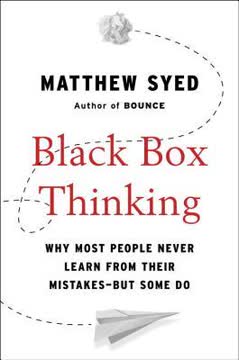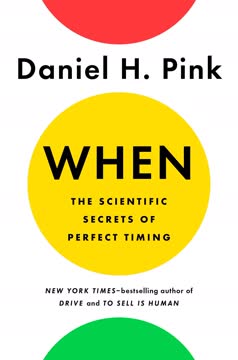Key Takeaways
1. Everyday Insights Can Lead to Groundbreaking Ideas
Every day is filled with those opportunities either seized or missed, ours for the taking if only we can learn to listen for them.
Importance of noticing: Groundbreaking ideas often stem from everyday observations and experiences. By paying attention to our surroundings, interactions, and frustrations, we can uncover valuable insights that lead to innovative solutions.
Examples of everyday insights:
- Richard Turere's "Lion Lights" invention to protect livestock
- The creation of disposable diapers by Marion Donovan
- The development of the KeepCup reusable coffee cup
These innovations demonstrate how seemingly simple observations can spark ideas that solve significant problems and create lasting impact.
2. Curiosity, Empathy, and Imagination Drive Innovation
A hunch happens at the intersection of all three qualities.
Cultivating key traits: Successful innovators develop and nurture three essential qualities:
- Curiosity: An insatiable desire to learn and explore
- Empathy: The ability to understand and share the feelings of others
- Imagination: The capacity to envision new possibilities and connections
By honing these traits, individuals can enhance their ability to recognize opportunities and develop meaningful solutions. This combination of qualities allows innovators to approach problems from multiple angles, leading to more creative and impactful ideas.
Practical applications:
- Ask thoughtful questions about how things work and why they are the way they are
- Actively listen to others and try to understand their perspectives and experiences
- Engage in thought experiments and creative exercises to expand your imaginative capacity
3. Challenge Assumptions and Ask Better Questions
Our insights are only as good as our questions.
Power of questioning: Breakthrough ideas often emerge when we challenge existing assumptions and ask probing questions. By reframing problems and exploring alternative perspectives, we can uncover new insights and opportunities for innovation.
Strategies for better questioning:
- Ask "Why?" multiple times to dig deeper into root causes
- Consider "What if?" scenarios to explore alternative possibilities
- Investigate "How might we...?" to focus on solutions and opportunities
Examples:
- Dr. Melody Gunn's reframing of the school attendance problem, leading to on-site laundry facilities
- Debbie Sterling's questioning of gender stereotypes in toys, resulting in GoldieBlox
4. Embrace Uncertainty and Learn from Failure
Mistakes aren't a necessary evil; they are a valuable and "inevitable consequence of doing something new."
Embracing failure: Innovation requires taking risks and stepping into the unknown. By reframing failure as a learning opportunity rather than a setback, we can build resilience and persistence in pursuing breakthrough ideas.
Strategies for embracing uncertainty:
- Adopt a "fail fast, learn fast" mentality
- Celebrate small wins and lessons learned from setbacks
- Create a safe environment for experimentation and risk-taking
Examples of learning from failure:
- Thomas Edison's numerous attempts before inventing the light bulb
- James Dyson's 5,127 prototypes leading to the successful Dyson vacuum cleaner
5. Cultivate a Growth Mindset for Creative Problem-Solving
Focusing on effort and engendering a love of learning, rather than ability, is the key to success.
Power of mindset: Adopting a growth mindset – the belief that abilities can be developed through dedication and hard work – is crucial for fostering creativity and innovation. This mindset encourages perseverance, learning from failures, and continuous improvement.
Strategies for developing a growth mindset:
- Embrace challenges as opportunities for growth
- View effort as a path to mastery
- Learn from criticism and setbacks
Impact on innovation:
- Increases willingness to take risks and explore new ideas
- Enhances problem-solving abilities through persistence
- Fosters a culture of continuous learning and improvement
6. Recognize Opportunities by Understanding People's Needs
Great ideas always seem obvious after the fact—when we have proof that they worked or some outward measure of their success.
Empathy-driven innovation: Successful ideas often arise from a deep understanding of people's needs, desires, and pain points. By developing empathy and actively listening to potential users, innovators can identify opportunities that others might overlook.
Techniques for understanding needs:
- Conduct user interviews and observations
- Create empathy maps and user personas
- Engage in ethnographic research
Examples of need-based innovations:
- Sara Blakely's creation of Spanx addressing women's undergarment issues
- Airbnb's solution to affordable travel accommodation
- Uber's response to frustrations with traditional taxi services
7. Execute Ideas Through Iterative Testing and Refinement
Successful creators, inventors and innovators don't wait for perfection. They try, test and iterate—using the fresh insights they gain at every step in the process to improve upon their ideas.
Importance of iteration: Bringing ideas to life requires a willingness to start with imperfect solutions and continuously refine them based on feedback and real-world testing. This iterative approach allows for rapid learning and improvement.
Steps for idea execution:
- Prioritize and choose one idea to focus on
- Articulate the problem and target audience
- Create an action plan
- Gather resources and collaborators
- Develop a minimum viable product (MVP)
- Test and gather feedback
- Evaluate and refine based on insights
Benefits of iterative testing:
- Reduces risk by validating assumptions early
- Allows for quick pivots and adjustments
- Increases the likelihood of creating a product that truly meets user needs
8. Create Value by Solving Real-World Problems
At the heart of every Next Big Thing is a personal quest to make a difference, to change someone or something, to do meaningful, fulfilling work that makes a difference to others.
Purpose-driven innovation: The most impactful ideas often stem from a genuine desire to solve real-world problems and improve people's lives. By focusing on creating value for others, innovators can develop solutions that resonate deeply with their target audience.
Characteristics of value-creating ideas:
- Address a significant pain point or unmet need
- Offer a unique or improved solution to existing problems
- Have the potential to positively impact many lives
Examples of problem-solving innovations:
- Who Gives a Crap's sustainable toilet paper addressing sanitation issues
- CreativeMornings' free events fostering connection in the design community
- Baby carrots repurposing "ugly" produce to reduce food waste
9. Harness the Power of Observation and Pattern Recognition
If we train ourselves to become more observant, if we pay attention—to our surroundings, to other people, to what's happening that shouldn't be, or what's not happening that should be—our most mundane experiences can fuel our boldest and most brilliant ideas.
Importance of observation: Developing keen observational skills allows innovators to notice patterns, anomalies, and opportunities that others might miss. This heightened awareness can lead to breakthrough insights and innovative solutions.
Techniques for improving observation:
- Practice mindfulness and present-moment awareness
- Keep a journal of daily observations and reflections
- Engage in people-watching and environmental scanning
Benefits of pattern recognition:
- Identifies trends and emerging opportunities
- Uncovers hidden connections between seemingly unrelated ideas
- Facilitates creative problem-solving by drawing insights from diverse sources
10. Trust Your Intuition While Balancing Data and Analysis
Data—that which we can easily measure—is supposed to make us smarter, and maybe it can, but I'd argue that it doesn't always make us wiser.
Balancing intuition and data: While data and analysis are valuable tools for decision-making, they should be complemented by intuition and human insight. Trusting your gut feelings, informed by experience and expertise, can lead to breakthrough ideas that data alone might not reveal.
Strategies for leveraging intuition:
- Cultivate self-awareness and reflection
- Practice making decisions based on limited information
- Seek diverse experiences to broaden your intuitive knowledge base
Examples of intuition-driven success:
- Steve Jobs' focus on design and user experience at Apple
- Richard Branson's approach to identifying opportunities for disruption
- J.K. Rowling's Harry Potter series, initially rejected by multiple publishers
Last updated:
Review Summary
Hunch receives mixed reviews, with an average rating of 3.53/5. Readers appreciate Jiwa's insights on intuition, creativity, and problem-solving in business. Many found the case studies and examples engaging, praising the book's readability and actionable advice. Critics argue that some concepts are derivative or obvious. The book is seen as valuable for entrepreneurs and creative thinkers, offering a framework for developing ideas and understanding customer needs. Some readers noted the lack of cohesion in certain sections but overall found it a pleasant and thought-provoking read.
Similar Books










Download PDF
Download EPUB
.epub digital book format is ideal for reading ebooks on phones, tablets, and e-readers.







